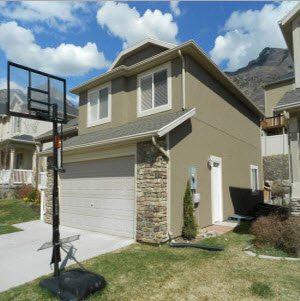Summer house painting projects can pose a challenge, especially when it comes to your homes exterior. Heat and humidity can cause these types of projects to turn into disasters. Read on to discover how to counter the problems summer weather can cause and prevent them from damaging your home improvement project.
High Temperatures: Painting the exterior of your home in high temperatures can cause a number of issues. Temperatures above 90-degrees can cause temperature blisters or bubbles in the paint. These lumps can be aesthetically unpleasing, and over time, burst and cause the paint to crack and peel. To prevent such issues, paint where the sun is not. Areas that are unexposed to the sun should be painted first. Follow the shadow the sun casts throughout the day around your home, and continue painting through dusk if necessary. Avoiding the sun will help keep the temperature of the paint as cool as possible to help in the prevention of bubbles.
High Humidity: It is recommended that water-based paints be used for exterior projects. This type of paint cures differently than oil-based paints. The water and solvents in paints evaporate to create a chemical reacts that creates the finished look. Painting in high humidity can cause the water to evaporate faster than the solvents, trapping moisture behind the cured paint. Similar to high temperatures, trapped moisture can cause the paint to bubble and eventually tear. Check your local weather listings for extreme levels of humidity before applying exterior paint.
So, when should I paint? There will be circumstances where you will need to paint to your home in levels of high humidity. Certain areas throughout the country are especially prone to high levels of humidity all year round, so it is important to understand acceptable levels of humidity that can be worked with, and conditions that should absolutely be avoided. Below are recommended levels of humidity for exterior painting.
- 40-50% humidity for a perfect, untarnished exterior paint job.
- 70%-80% humidity will cause a slower drying process, but is still not a hazard to painting.
- 85%-100% humidity means you should avoid attempting to complete any exterior painting.
When working on an exterior painting project, know the environment you are painting in to get the look you want. Knowing when humidity levels are optimal for painting can mean the difference between a botched job and a flawless finish, and is best left to the experts, like those at CertaPro Painters of Great Valley.




